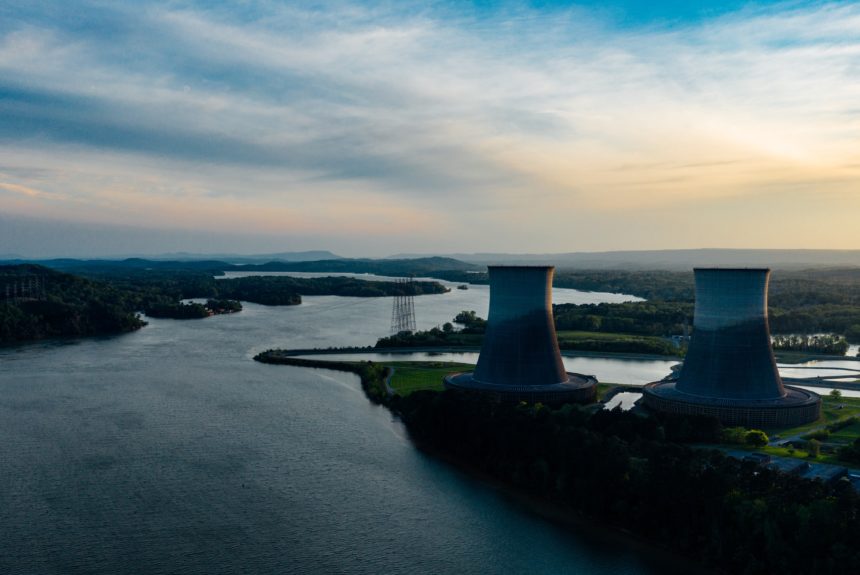The United States needs nuclear power.
Don’t take my word for it. “It’s the only carbon-free energy source that can reliably deliver power day and night, through every season, almost anywhere on earth, that has been proven to work on a large scale,” Microsoft founder Bill Gates wrote this year in his book about climate change. “It’s hard to foresee a future where we decarbonize our power grid without using more nuclear power.”
But there is a problem with nuclear power: nuclear waste.
Fission reactors use radioactive material to generate heat and produce electricity. After that nuclear fuel is removed from a reactor, it is stored in a pool for about five years. After that, the remaining material is transferred to a “dry cask,” a concrete and steel container built to remain intact through any conceivable disaster including hurricanes, earthquakes or tornados. The question is what to do with those dry casks.
“Right now, all of the nuclear waste that a power plant generates in its entire lifetime is stored on-site,” the Nuclear Energy Institute explains. “A permanent disposal site for used nuclear fuel has been planned for Yucca Mountain, Nevada, since 1987, but political issues keep it from becoming a reality.”
Yucca Mountain seems ideal in many ways. “Yucca’s storage caverns — 1,000 feet below the surface and 1,000 feet above the water table in the Nevada desert — are safe,” The Chicago Tribune opined in 2014. “They are geologically stable.” But that editorial also noted that the Barack Obama administration, as of 2010, had dropped federal plans to move waste there.
One big reason is that former Sen. Harry Reid, who served as both Majority and Minority leader in the Senate, opposed Yucca Mountain. In that case, one man had enough sway to kill a federal project. But NIMBY—Not In My Backyard—concerns are always going to be a roadblock to permanent storage. For example, in 2013 the Mississippi Energy Institute advocated opening a facility in its state to accept waste in a bid to attract billions of research dollars to the state. That idea, too, went nowhere and was scrapped long ago.
But a private sector company has an idea that can succeed where the federal government has failed. Deep Isolation nuclear waste solutions offers a three-step plan to safely bury waste permanently near where it is produced.
Its process delivers a foundational study to determine a safe location, a test process to determine that the site is ready, and the drilling of a repository where the waste can be stored in custom-fit canisters. If conditions happen to change, Deep Isolation promises the waste can also be retrieved from the site, if necessary. It is the sort of creative approach that could turn the liability of on-site storage into the asset of permanent, safe waste storage.
Also notable about Deep Isolation is that its advisors include bi-partisan science and policy experts, such as Steven Chu, Noble Prize winner in physics and former Secretary of Energy under President Obama, and Ed Feulner, founder and long-time president of The Heritage Foundation. If anything, in spite of former Sen. Harry Reid’s insistence, this should underscore that nuclear energy and its future innovations can and should be a non-partisan issue.
Another approach would involve reusing nuclear waste instead of burying it.
“Once reactor fuel (uranium or thorium) is used in a reactor, it can be treated and put into another reactor as fuel,” Nick Touran writes at Whatisnuclear.com. “If you recycle the waste, the final waste that is left over decays to harmlessness within a few hundred years, rather than a million years as with standard (unrecycled) nuclear waste.”
The problem is that recycling, right now, is complicated and expensive. Then again, humans solve complicated problems all the time. A year ago, there was no vaccine for COVID-19. Today, there are several effective options available. Need was the mother of invention in that case, and it could work for recycling nuclear waste as well.
A limited government can help the private sector in this case. Federal investment into Research and Development can help companies get across what we call the Valley of Death, the time between when a technology is developed and when it is commercially feasible. So too can R&D help develop affordable, effective ways of handling nuclear waste.
In the U.S. alone, nuclear power prevented more than 476 metric tons of CO2 from entering the atmosphere in 2019. That’s the equivalent of removing 100 million cars from the roads. If our goal is to reduce carbon dioxide emissions, hopefully, we can all agree that we will need more nuclear power. Dealing effectively with nuclear waste, whether through “deep isolation” or recycling, will allow us to have the power, safely and cleanly.
The views and opinions expressed are those of the author’s and do not necessarily reflect the official policy or position of C3.
